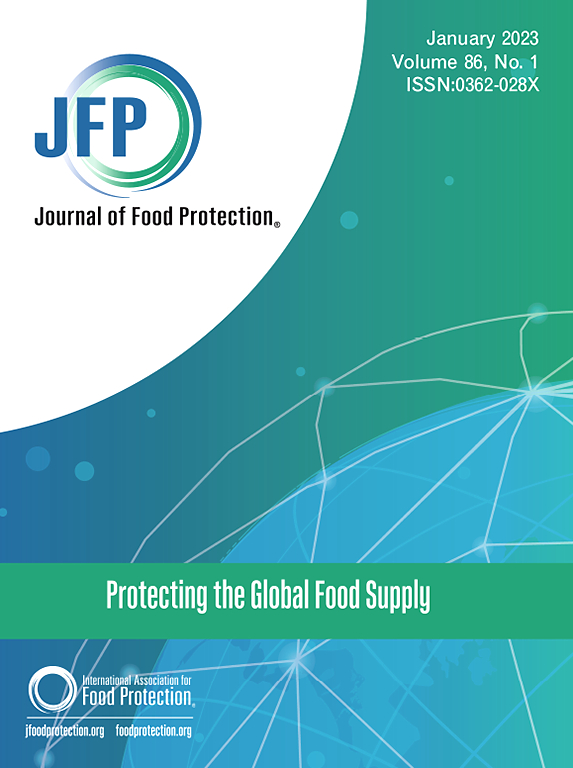具有不同健康社会决定因素的美国各县沙门氏菌病发病率的差异也受极端天气的影响:对 1997-2019 年实验室肠道疾病监测 (LEDS) 数据的反事实分析。
IF 2.8
4区 农林科学
Q3 BIOTECHNOLOGY & APPLIED MICROBIOLOGY
引用次数: 0
摘要
了解沙门氏菌病负担的差异对于制定有效、公平的预防计划至关重要。过去为确定差异特征所做的努力在范围上受到了限制,在进行研究时也受到了现有分析方法的限制。我们旨在通过确定不同健康决定因素 (DOH) 县之间沙门氏菌病发病率的差异来弥补这一不足。我们利用 1997-2019 年美国全国基于实验室的肠道疾病监测(LEDS)数据,计算了经年龄调整的县级沙门氏菌病发病率/100,000 人,并将其与可公开获得的 DOH 数据相链接。我们使用阶跃反事实随机森林(CFRF)来量化每个 DOH 的以下风险:(i) 县级报告病例≥1 例与未报告病例的风险;(ii) 当报告病例≥1 例时,高发病率(≥16 例/100,000 人)或低发病率(≥1&100,000 人)的风险。本文章由计算机程序翻译,如有差异,请以英文原文为准。
Disparities in Salmonellosis Incidence for US Counties with Different Social Determinants of Health Profiles Are Also Mediated by Extreme Weather: A Counterfactual Analysis of Laboratory Enteric Disease Surveillance (LEDS) Data From 1997 through 2019
Understanding disparities in salmonellosis burden is critical for developing effective, equitable prevention programs. Past efforts to characterize disparities were limited in scope and by the analytical methods available when the study was conducted. We aim to address this gap by identifying disparities in salmonellosis incidence between counties with different determinants of health (DOH) profiles. Using national U.S. Laboratory-based Enteric Disease Surveillance (LEDS) data for 1997–2019, age-adjusted county-level salmonellosis incidence/100,000 persons was calculated and linked to publicly available DOH data. We used hurdle counterfactual random forest (CFRF) to quantify, for each DOH, the risk that (i) ≥1 versus no cases were reported by a county, and (ii) when ≥1 case was reported, whether a high (≥16 cases/100,000 persons) or low incidence (≥1 & <4 cases/100,000 persons) was reported. Risk in both models was significantly associated with demographic DOH, suggesting a disparity between counties with different demographic profiles. Risk was also significantly associated with food, healthcare, physical, and socioeconomic environment. The risk was generally greater for counties with more negative food resources, and for under-resourced counties (e.g., fewer healthcare and social services, fewer grocery stores). Risk was also significantly higher if any extreme weather event occurred. The study also found that underreporting and underascertainment appeared to result in underestimation of salmonellosis incidence in economically marginalized and under-resourced communities. Overall, our analyses indicated that, regardless of other county characteristics, extreme weather was associated with increased salmonellosis incidence, and that certain communities were differentially disadvantaged toward a higher incidence. This information can facilitate the development of community-specific prevention efforts.
求助全文
通过发布文献求助,成功后即可免费获取论文全文。
去求助
来源期刊

Journal of food protection
工程技术-生物工程与应用微生物
CiteScore
4.20
自引率
5.00%
发文量
296
审稿时长
2.5 months
期刊介绍:
The Journal of Food Protection® (JFP) is an international, monthly scientific journal in the English language published by the International Association for Food Protection (IAFP). JFP publishes research and review articles on all aspects of food protection and safety. Major emphases of JFP are placed on studies dealing with:
Tracking, detecting (including traditional, molecular, and real-time), inactivating, and controlling food-related hazards, including microorganisms (including antibiotic resistance), microbial (mycotoxins, seafood toxins) and non-microbial toxins (heavy metals, pesticides, veterinary drug residues, migrants from food packaging, and processing contaminants), allergens and pests (insects, rodents) in human food, pet food and animal feed throughout the food chain;
Microbiological food quality and traditional/novel methods to assay microbiological food quality;
Prevention of food-related hazards and food spoilage through food preservatives and thermal/non-thermal processes, including process validation;
Food fermentations and food-related probiotics;
Safe food handling practices during pre-harvest, harvest, post-harvest, distribution and consumption, including food safety education for retailers, foodservice, and consumers;
Risk assessments for food-related hazards;
Economic impact of food-related hazards, foodborne illness, food loss, food spoilage, and adulterated foods;
Food fraud, food authentication, food defense, and foodborne disease outbreak investigations.
 求助内容:
求助内容: 应助结果提醒方式:
应助结果提醒方式:


